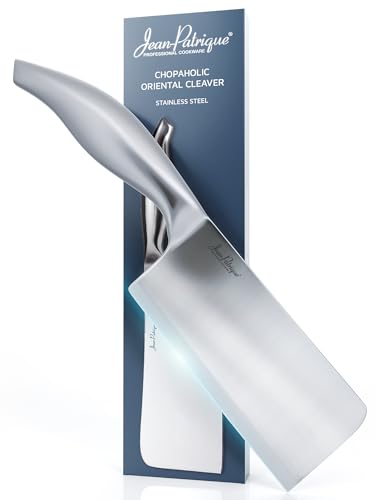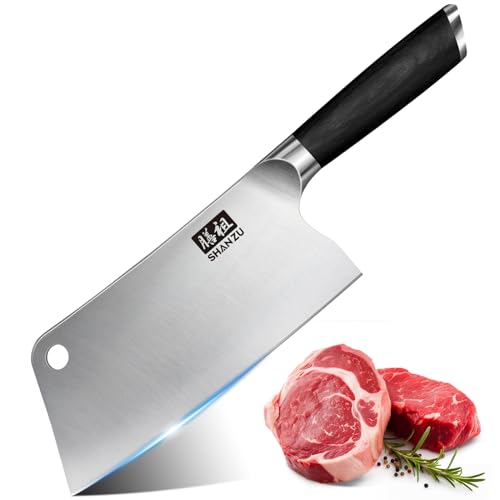The Role of Cleavers in Cooking
Cleavers, also known as meat or Chinese cleavers, are large, rectangular knives featuring a thick blade that tapers down to a sharp edge. While the name may suggest their primary use, cleavers are versatile tools widely used in professional and home kitchens for chopping, slicing, dicing, and more. But are there any specific cooking techniques that require the use of a cleaver?
Cut Through Bones with Ease
One of the primary uses of cleavers is to cut through bones. The thick, heavy blade provides the necessary weight and leverage to slice through poultry, meat, and fish bones, making it an essential tool for butchers and anyone who frequently cooks meat. This technique is often used in Chinese cooking to prepare dishes like stir-fried boneless chicken or beef, where the meat needs to be sliced in thin, boneless pieces without any jagged edges.
Hack Through Hard Vegetables and Root Crops
Cleavers also excel at handling hard vegetables and root crops such as pumpkins, squash, and yams. The weight and shape of the blade make it easy to hack through the tough outer layer and break down the flesh into smaller pieces for cooking. This technique is common in Asian and African cuisine, where these types of ingredients are popular.
Create Thin, Uniform Slices
Another unique use of cleavers is to make thin, uniform slices of meat or fish. By using a motion that involves tapping the cleaver’s flat side against the meat or fish repeatedly, you can create thin slices in a fraction of the time it would take with a regular knife. This technique is often used in Japanese cooking to prepare dishes like sashimi or carpaccio and requires a steady hand and solid knife skills.
Mince and Crush Garlic and Ginger
Finally, cleavers are excellent tools for mincing and crushing garlic and ginger, particularly when they need to be turned into a paste or a fine texture. The blade’s wide surface area allows you to crush the cloves efficiently, while the sharp edge can chop them into a paste-like consistency. This technique is heavily used in Indian and Thai cooking, where garlic and ginger are prevalent ingredients in many dishes.






